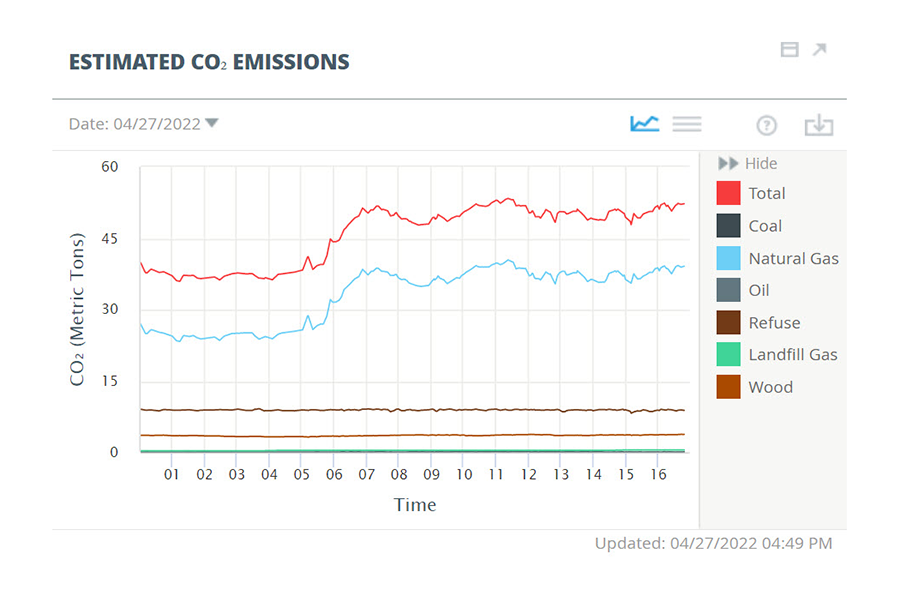View real-time estimated carbon dioxide emissions on ISO Express
Update: The factors used to calculate estimated CO2 emissions were updated in January 2023. ISO New England analysts regularly review and refine the methodology used to develop these emissions factors, in order to reflect the characteristics of New England’s generating fleet and improve the accuracy of the real-time estimates.
ISO New England has launched a new feature on the ISO Express dashboard that allows users to view estimated real-time carbon dioxide (CO2) emissions from New England’s power plants. The estimates are based on a formula that multiplies power generation, in megawatts (MW), from each fuel type by emissions factors developed by ISO New England and based on Environmental Protection Agency (EPA) data.
The chart displays estimated average CO2 emissions, in metric tons, from New England power plants throughout the course of the day. The estimates are for resources using oil, refuse, wood, coal, landfill gas, or natural gas to generate electricity. The graph also shows the sum of estimated CO2 emissions from these resources as a total estimate for the region’s bulk power system.
Resources that do not emit CO2, such as nuclear, hydro, wind, solar, and energy storage devices, do not appear on this chart. The graph does not include emissions estimates for electricity imported from neighboring areas because the resource types producing this electricity are unspecified.
ISO Express users can view the data as a graph or a data table, can download data in CSV format, and can see estimated emissions from days going back several years.

Other emissions data
The ISO has also started detailing estimated CO2 emissions as part of its monthly reports on wholesale energy prices and consumer demand in the region.
These estimates are intended to supplement the long-term emissions reporting compiled in the annual ISO New England Electric Generator Air Emissions Reports, which are developed through reporting from individual resources and provide a more comprehensive analysis of New England’s electric generator air emissions.
- Categories
- Inside ISO New England
- Tags
- environment
